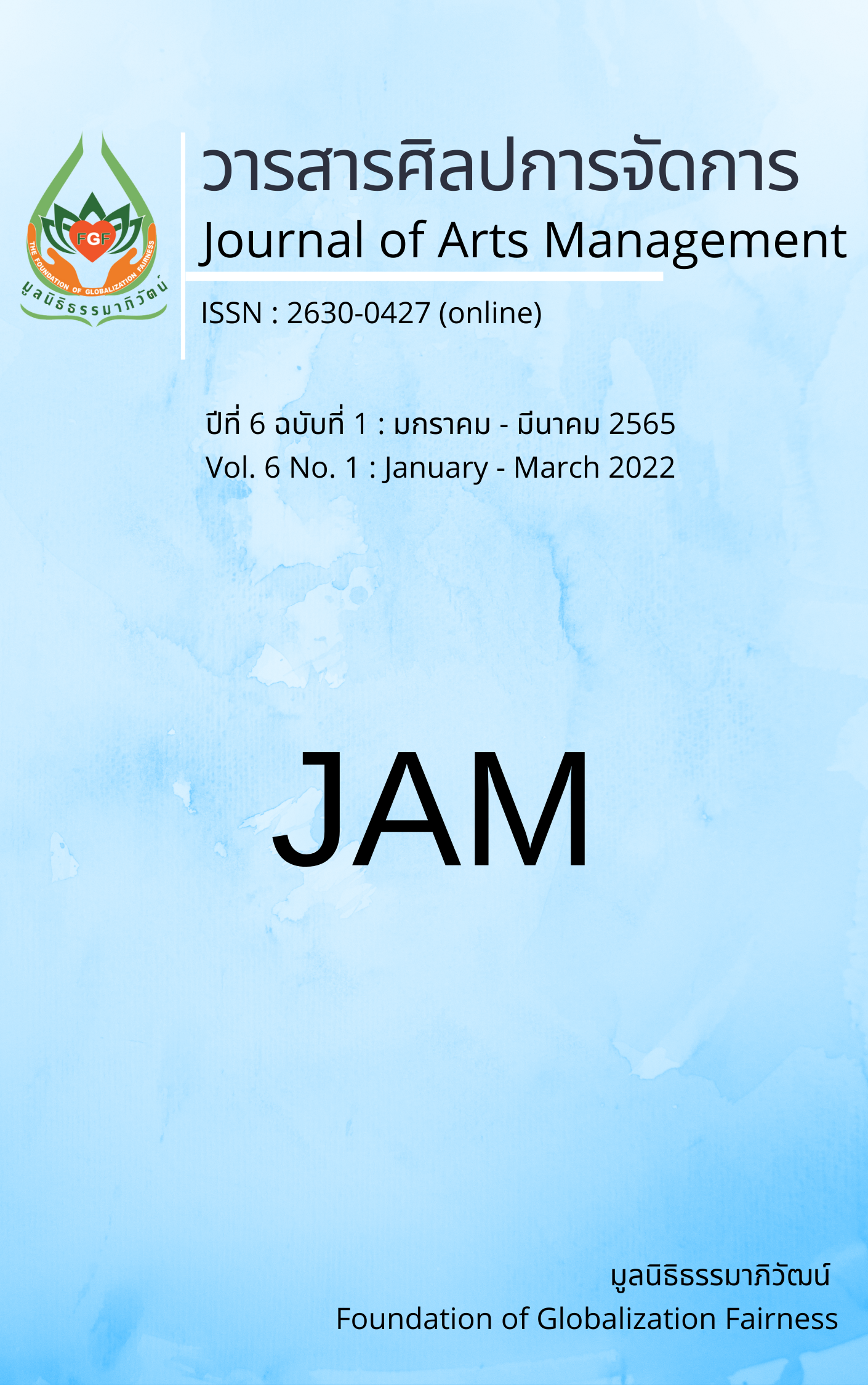The Implementation of Communication Strategies to Improve English Speaking Skills for Eco-Cultural Tourism Staff at Highland Development Area in Thailand
Main Article Content
Abstract
The purposes of this research were: 1) to compare the pre/post-test scores of high, moderate, and low English proficiency eco-cultural tourism staff by using the BSPE model; and 2) to conduct in-depth interviews and observe the types of communication strategies (CSs) employed by high, moderate, and low English proficiency Eco-Cultural Tourism staff. The sample consisted of 70 eco-cultural tourism staff at the highland development area in Uthai Thani province, Thailand. They participated in the English for eco-culture tourism workshop by doing a fifteen-hour course. A mixed-method methodology was used, with quantitative and qualitative data collected through questionnaires and interviews. The research results were found as follows:
1) Before and after the training with the Paired Sample T-Test, the sampling knew more English for eco-cultural tourism during the post-training period than during the pre-training period, with higher average scores of 8.8 ± 3.7 points, or increased knowledge by 29.7% with a statistical significance at the 0.05 level (t = 18.489, P = 0.000), which was based on assumptions.
2) The in-depth interview and observation found that the high and moderate proficiency groups frequently used the first language-switch and circumlocution strategies. The low proficiency group used the surfing strategy and the word coinage strategy.
However, the study also revealed that the majority of participants believed that English speaking strategies were essential. Implementation of communication strategies will help promote income for eco-cultural tourism staff. These strategies assume that people in the community can communicate well in English.
Article Details

This work is licensed under a Creative Commons Attribution-NonCommercial-NoDerivatives 4.0 International License.
Views and opinions appearing in articles in the Journal of Arts of Management It is the responsibility of the author of the article. and does not constitute the view and responsibility of the editorial team I agree that the article is copyright of the Arts and Management Journal.
References
Bloom, B. S., Madaus, G. F., & Hastings, J. T. (1971). Handbook on formative and summative evaluation of student learning. McGraw-Hill.
Boonkongsaen, N. (2018). Communication strategies used by Thai EFL teachers. The New English Teacher, 12(1), 63-76.
Brown, H. (2000). Principles of language learning and teaching. Longman.
Cajee, L. (2014). Eco-cultural tourism: a tool for environmental, cultural and economic sustainability (A case study of Darap Village, West Sikkim). SHS Web of Conference, 12(9), 1-9. https://doi.org/10.1051/shsconf/20141201029
Ceballos-Lascuráin, H. (1996). Tourism, ecotourism and protected areas: the state of nature-based tourism around the world and guidelines for its development. IUCN Publications.
Chooma, T., & Chattiwat, W. (2020). The development of task-based learning (TBL) and communication strategies (CSs) instructional model to enhance English speaking skill for public health students. Rangsit Journal of Educational Studies, 7(1), 60-75.
Faerch, C., & Kasper, G. (1984). Strategy in language communication. Longman.
Gillian, W., & Russell, A. (2004). Eco-cultural tourism as a means for the sustainable development of culturally marginal and environmentally sensitive region. Tourist Studies, 4(3) 235–254. https://doi.org/10.1177/1468797604057326
Krejcie, R. V., & Morgan, D. W. (1970). Determining sample size for research activities. Educational and Psychological Measurement, 30(3), 607–610.
Malasit, Y., & Sarobol, N. (2013). Use of Communication Strategies by Thai EFL Learners. In Proceedings of the 3rd International Conference on Foreign Language Learning and Teaching, Language Institute, Thammasat University.
Metcalfe, J., & Noom-Ura, S. (2013). Communication strategy use of high and low proficiency learners of English at a Thai University. Learn Journal, 6(1), 66-87.
Moli, G. (2011). Community based eco cultural heritage tourism for sustainable development in the Asian region: A conceptual framework. International Journal of Social Ecology and Sustainable Development, 2(2), 66-80.
Nakatani, Y. (2006). Developing an oral communication strategy inventory. Modern Language Journal, 90(2), 151-168. https://doi.org/10.1111/j.1540-4781.2006.00390.x
Nomnian, S. (2014). Thai entrepreneurs’ needs of English language for raft service business. Humanities, Arts and Social Sciences Studies, 14(3), 101-128.
Oxford, R. L. (1990). Language learning strategies: What every teacher should know. Newbury House Publishers.
Richards, G. (2017). Tourists in their own city – considering the growth of a phenomenon. Tourism Today, 16, 8-16.
Sinjaru, T. (2010). Research and analysis of statistical data by SPSS (11th ed). Business R&D Printing House.
Tarone, E. (1981). Some thoughts on the notion of communication strategy. TESOL Quarterly, 15, 285-295. http://dx.doi.org/10.2307/3586754
Willems, G, M. (1987). Communication strategies and their significance in foreign language teaching. System, 15(3), 351-364. https://doi.org/10.1016/0346-251X(87)90009-1


